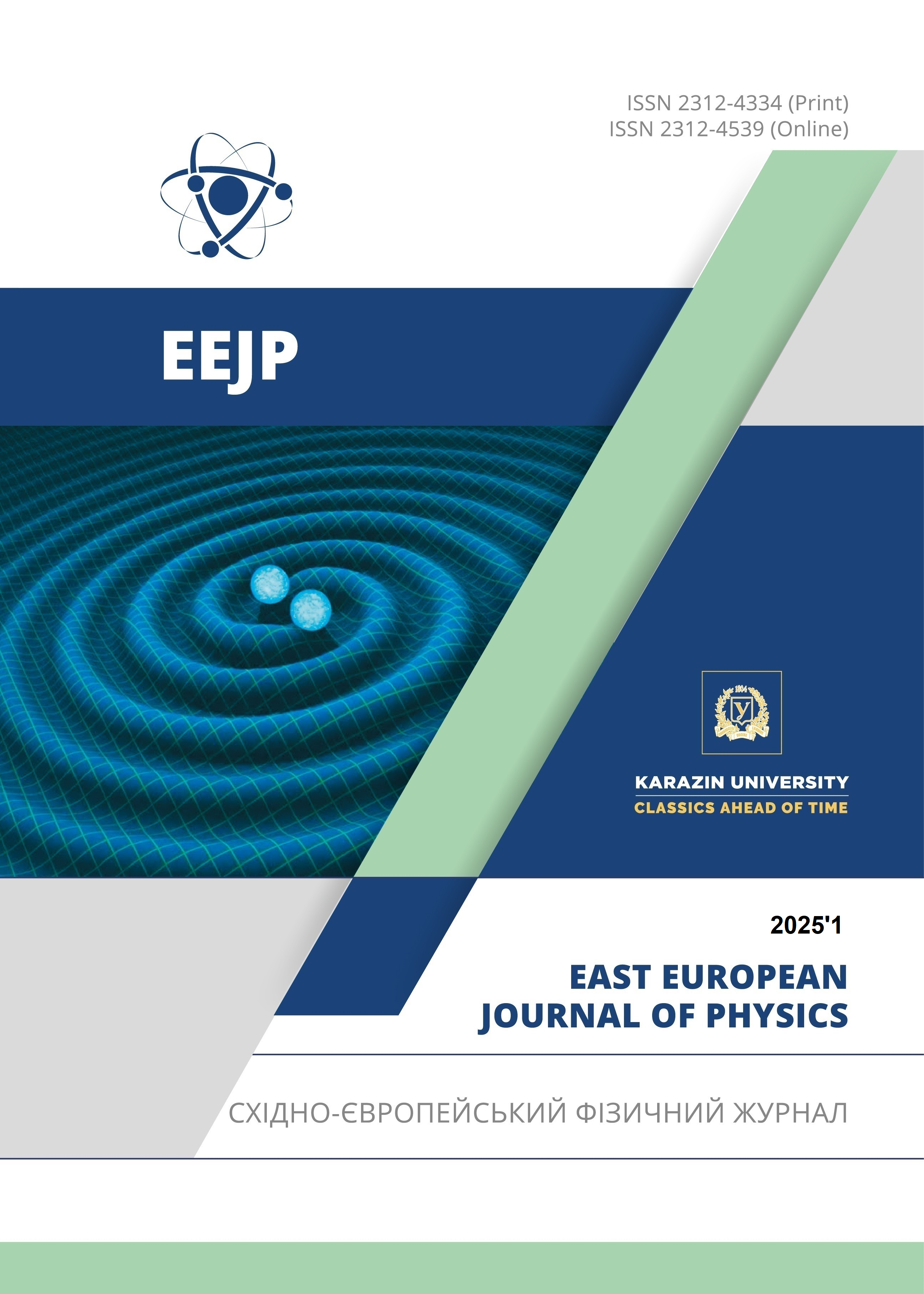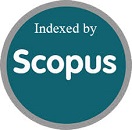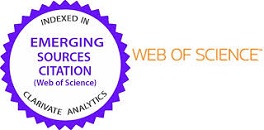Analysis of the Ion Beam Composition of InSb and (InSb)0.98Bi0.02 Obtained by Liquid Metal Ion Source
Abstract
To investigate the mass composition of the ion beam obtained through field ion emission, a mass analyzer designed analogous to the Wien velocity filter was utilized. This Wien filter analyzer operates based on the principle of intersecting mutually perpendicular electric and magnetic fields (E×B) to classify charged particles according to their mass and charge. The ion beam was obtained using mInSb and InSb0.98Bi0.02 as the working The mass composition of the ion group was analyzed using this method. In the experiments, it was found that the ion beam obtained using InSb as the working substance had a homogeneous composition, consisting solely of (InSb)+ ions. However, in contrast, when the working substance was (InSb)0.98Bi0.02, it was determined that the ion beam had a miscellaneous composition. In addition to (InSb)+ ions, the ion beam was found to contain ((InSb)0.98Bi0.02)+ and (Bi)+ ions.
Downloads
References
P.A. Mazharov, V.G. Dudnikov, and A.B. Tolstoguzov, “Electrohydrodynamic emitters of ion beams” UFN, 190, 1293 (2020). https://doi.org/10.3367/UFNr.2020.09.038845
C. Cruz, K. Paurezzaci, and A. Wagner, “Ion cluster emission and deposition from liquid gold ion sources,” J. Appl. Phys. 58, 2724–2730 (1985). https://doi.org/10.1116/1.570316
D.R. Kingham, and L.W. Swanson, “A theoretical model of a liquid metal ion source,” Vacuum, 34(10-11), 941-945 (1984). https://doi.org/10.1016/0042-207X(84)90175-1
L. Bruchhaus, et. al., “Comparison of technologies for nano device prototyping with a special focus on ion beams,” J. Appl. Phys. Rev. 4, 011302 (2017). https://doi.org/10.1063/1.4972262
L. Bischoff, P. Mazarov, L. Bruchhaus, and, J. Gierak, “Liquid metal alloy ion sources—An alternative for focussed ion beam technology,” Applied Physics Reviews, 3(2), 021101 (2016). https://doi.org/10.1063/1.4947095
L. Bischoff, N. Klingner, P. Mazarov, K. Lenz, R. Narkowicz, W. Pilz, and F. Meyer, “Dysprosium liquid metal alloy ion source for magnetic nanostructures,” Journal of Vacuum Science & Technology B, 40(5), 05282 (2022). https://doi.org/10.1116/6.0001837
I.S. Gasanov, I.I. Gurbanov, and E.M. Akbarov, Eur. Phys. J. D, 69, 75 (2015). https://doi.org/10.1140/epjd/e2015-50531-0
I.S. Gasanov, I.I. Gurbanov, and E.M. Akbarov, ACTA Physica Polonica A, 134(1), 119 (2018). https://doi.org/10.12693/APhysPolA.134.119
S.A. Aliyev, F.E. Mammadov, E.M. Akberov, I.I. Gurbanov, A.A. Badalov, and Sh.O. Eminov, “Main elements and characteristics of electrohydrodynamic ion sources based on InSb,” Azerbaijan J. of Physics, XXIX(3), section En, 19-23 (2023).
L. Bischoff, N. Klingner, P. Mazarov, W. Pilz, and F. Meyer, “Boron liquid metal alloy ion sources for special focused ion beam applications,” Journal of Vacuum Science & Technology B, 38(4), (2020). https://doi.org/10.1116/6.0000073
I.S. Gasanov, Plasma and beam technology, (Science, 2007), pp. 67-68. (in Russian)
Copyright (c) 2025 F.E. Mammadov, S.A. Aliev, I.I. Gurbanov, Sh.O. Eminov, A.J. Khalilov, E.M. Akberov, A.A. Badalov

This work is licensed under a Creative Commons Attribution 4.0 International License.
Authors who publish with this journal agree to the following terms:
- Authors retain copyright and grant the journal right of first publication with the work simultaneously licensed under a Creative Commons Attribution License that allows others to share the work with an acknowledgment of the work's authorship and initial publication in this journal.
- Authors are able to enter into separate, additional contractual arrangements for the non-exclusive distribution of the journal's published version of the work (e.g., post it to an institutional repository or publish it in a book), with an acknowledgment of its initial publication in this journal.
- Authors are permitted and encouraged to post their work online (e.g., in institutional repositories or on their website) prior to and during the submission process, as it can lead to productive exchanges, as well as earlier and greater citation of published work (See The Effect of Open Access).








